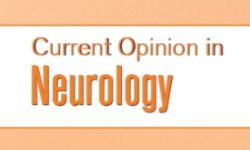
“Malignant melanoma is a complex malignancy with significant morbidity and mortality. The incidence continues to rise, and despite advances in treatment, the prognosis is poor. Thus, it is necessary to develop novel strategies to treat this aggressive cancer. Synthetic cannabinoids have been implicated in inhibiting cancer cell proliferation, reducing tumor growth, and reducing metastasis. We developed a unique study focusing on the effects of treatment with a cannabinoid derivative on malignant melanoma tumors in a murine model.
RESULTS:
A significant decrease in tumor size was detected in mice treated with CBD when compared with the control group (P = 0.01). The survival curve of melanoma tumors treated with CBD increased when compared with the control group and was statistically significant (P = 0.04). The growth curve and survival curve of melanoma tumors treated with Cisplatin were significantly decreased and increased, respectively, when compared with the control and CBD-treated groups. Mice treated with Cisplatin demonstrated the longest survival time, but the quality of life and movement of CBD-treated mice were observed to be better.
CONCLUSIONS:
We demonstrate a potential beneficial therapeutic effect of cannabinoids, which could influence the course of melanoma in a murine model. Increased survival and less tumorgenicity are novel findings that should guide research to better understand the mechanisms by which cannabinoids could be utilized as adjunctive treatment of cancer, specifically melanoma. Further studies are necessary to evaluate this potentially new and novel treatment of malignant melanoma.”
https://www.ncbi.nlm.nih.gov/pubmed/30691796
https://www.journalofsurgicalresearch.com/article/S0022-4804(18)30626-7/fulltext



 “Intellectual disability is the most limiting hallmark of Down syndrome, for which there is no gold-standard clinical treatment yet.
“Intellectual disability is the most limiting hallmark of Down syndrome, for which there is no gold-standard clinical treatment yet.
 “To review the history, pharmacology, and clinical science of
“To review the history, pharmacology, and clinical science of  “Nicotine stimulates fibroblast proliferation while increasing inflammation and fibrosis of tissues.
“Nicotine stimulates fibroblast proliferation while increasing inflammation and fibrosis of tissues.